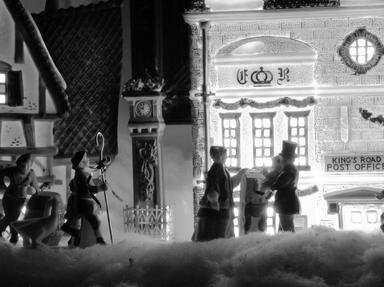Quiz Answer Key and Fun Facts
1. Oscar Wilde couldn't think of this Dickensian death scene 'without laughing', but crowds of Americans waited at the wharf for the final installments of the novel to arrive so they could find out whether the character lived or died. Some call this death scene maudlin, others, heartrending. Who is the character here?
2. One of the most famous death scenes in a Dickens novel ends in the words. "It is a far, far better thing that I do, than I have ever done; it is a far, far better rest that I go to than I have ever known." To whom are these words attributed?
3. Facing criminal charges and learning that the child he tried to use to control an enemy was actually his own son, one of the worst of Dickensian villains hangs himself from a hook at the top of his house. Who is he?
4. "...I saw a great flaming light spring up. In the same moment I saw her running at me, shrieking, with a whirl of fire blazing all about her, and soaring at least as many feet above her head as she was high." What Dickensian character meets such a terrible end?
5. A young woman is bludgeoned to death and Dickens writes "Of all bad deeds that, under cover of the darkness, have been committed within wide London's bounds since night hung over it...that was the foulest and most cruel." Who is the victim of the horrific murder?
6. There are approximately 58 deaths in all of Charles Dickens' novels, and 'Bleak House', holds the record with 8. The strangest of these is the death of Krook, the owner of the rag and bottle shop. How does he die?
7. David Copperfield witnesses the death of two of his friends, one of whom dies trying to rescue the other from a shipwreck. "...I saw him lying with his head upon his arm, as I had often seen him lie at school." Which one of the two friends does he describe here?
8. The house of Usher is not the only one that falls in 19th century literature. Charles Dickens' has his own fall of the house of Clennam, where a house collapses in front of the eyes of its mistress, killing the villain Rigaud. Which novel is this?
9. In Charles Dickens' novels, lots of people drown, die from disease, are poisoned or hung. In 'Dombey and Son' however, James Carker dies in a very special, modern way. What happens to him?
10. In 1843 Charles Dickens published a novella about a dead man who visits a living man and shows that man a vision of his own death. What's the name of the story?
Source: Author
CSLwoman
This quiz was reviewed by FunTrivia editor
MotherGoose before going online.
Any errors found in FunTrivia content are routinely corrected through our feedback system.
